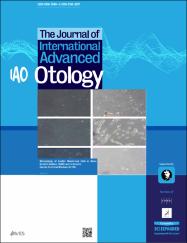The potential protective effects of 2-aminoethyl diphenylborinate against inner ear acoustic trauma: Experimental study using transmission and scanning electron microscopy

Göster/
Erişim
info:eu-repo/semantics/openAccessTarih
2015Yazar
Kaymakçı, MustafaAcar, Mustafa
Burukoğlu, Dilek
Kutlu, Hatice Mehtap
Shojaolsadati, Paria
Cingi, Cemal
Muluk, Nuray Bayar
Üst veri
Tüm öğe kaydını gösterÖzet
OBJECTIVE: In this prospective experimental study, we investigated the preventive effects of 2-aminoethyl diphenylborinate (2-APB) in rats exposed to acoustic trauma (AT). Light microscopic, transmission electron microscopic (TEM), and scanning electron microscopic (SEM) examinations were performed. MATERIALS and METHODS: Eighteen healthy Wistar albino rats were divided into the following three groups: groups 1 (control), 2 (AT), and 3 (AT+APB). The rats in groups 2 and 3 were exposed to AT; in group 3 rats, 2-APB at 2 mg/kg was also administered, initially transperitoneally, after 10 min. RESULTS: During the light microscopic, TEM, and SEM examinations, the structures of the cochlear hair cells, stereocilia, and Deiter's cells were normal in the control group. In the AT group, the organ of Corti and proximate structures were damaged according to the light microscopic examination. During the TEM examination, intense cellular damage and stereocilia loss were detected, while during the SEM examination, extensive damage and stereocilia loss were observed. Decreased damage with preserved cochlear structure was detected during the light microscopic examination in the AT+APB group than in the AT group. During the TEM and SEM examinations, although stereocilia loss occurred in the AT+APB group, near-normal cell, cilia, and tectorial membrane structures were also observed in the AT+APB group compared with the AT group. CONCLUSION: 2-APB may have protective effects against AT damage of the cochlea. The main mechanism underlying this effect is the inhibition of the vasoconstriction of the cochlear spiral modiolar artery, thereby improving cochlear blood flow. We conclude that 2-APB may also be effective if used immediately following AT.

















